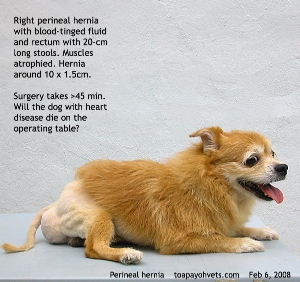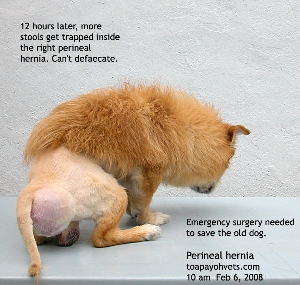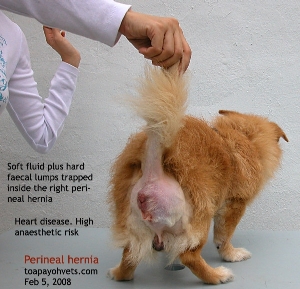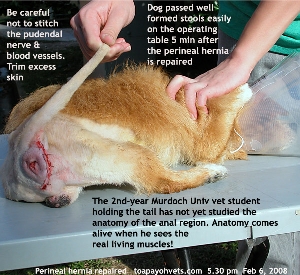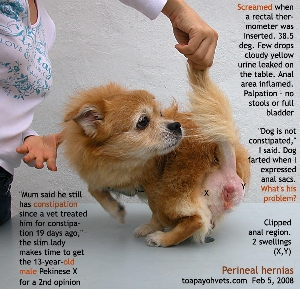PATIENT. Pekinese X Pomeranian,
Male, 10-13 years old. P.S. UPDATE: As at Jan 9, 2010, the daughter had not contacted me since
the surgery in Feb 2008. I presumed that my right perineal hernia repair
was a success and that the left perineal hernia did not expand and caused
"constipation."
Another case study : Perineal
Hernia in a 12-year-old Shetland X
